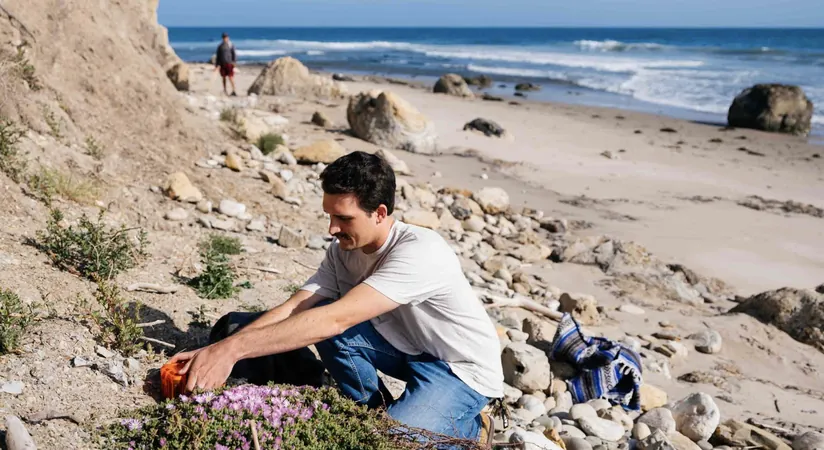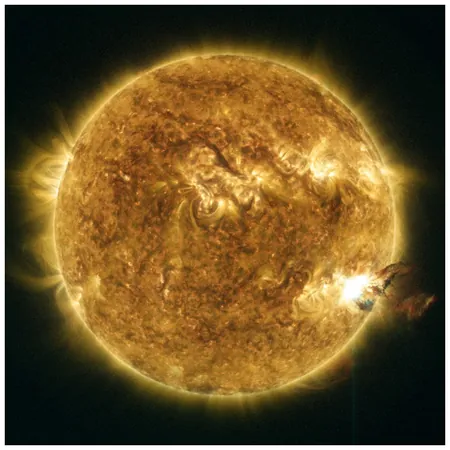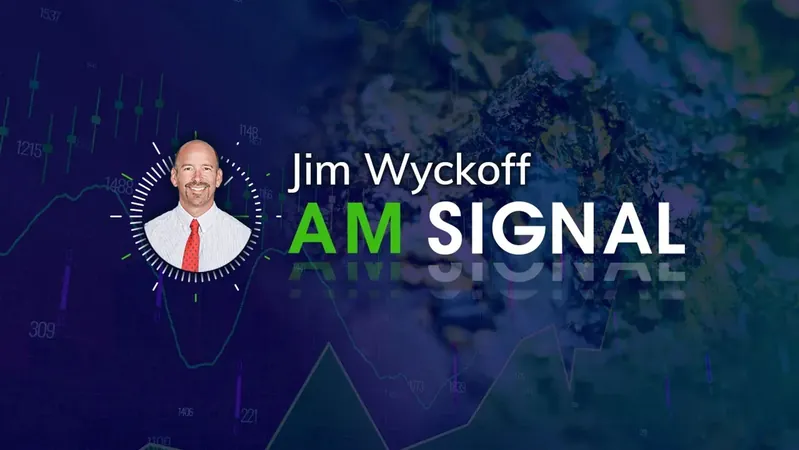
Unlocking the Surf's Secrets: How Scientists Are Tuning into Hidden Ocean Signals
2025-09-02
Author: Olivia
Imagine standing by the shore, listening to the soothing sound of waves crashing against the sand. But there’s more to this coastal symphony than meets the ear! Beneath the surface hum of the ocean, scientists have uncovered a treasure trove of low-frequency sounds that could change how we understand our seas.
The Science Behind the Sounds
Researchers from UC Santa Barbara are exploring these mysterious acoustic vibrations in a groundbreaking study published in the *Geophysical Journal International*. They’ve pinpointed the acoustic and seismic signatures of breaking waves, and they aim to utilize these signals to monitor marine conditions in real-time!
What Are Infrasound and Seismic Waves?
While we hear the rumbles and crashes of waves, much of the energy they produce is in the form of infrasound and seismic waves—frequencies too low for human ears to detect. According to lead researcher Jeremy Francoeur, bubbles in breaking waves oscillate due to pressure changes, generating signals that transfer into both the air and the seabed.
Mapping the Ocean's Rhythm
Operating from their coastal research site, the team employed an array of sensors to capture the infrasound and seismic activity at UCSB's Coal Oil Point Reserve. By correlating these data with video footage of surf conditions, they could identify the precise acoustic signatures of waves crashing on the shore.
Decoding the Surf's Signature
Their findings revealed that the crashing waves produced repetitive infrasound pulses between 1 and 5 Hz—essentially the low, thunderous rumble of the ocean. Interestingly, this sound, though inaudible to us, correlates with significant ocean wave heights. However, the relationship between the infrasound signals and visible wave conditions turned out to be more complex than initially thought.
Unraveling Coastal Mysteries
The researchers are curious whether certain beach areas consistently generate stronger infrasound signals. With plans to compare their findings from California to locations like Tahiti, they seek to uncover whether wave patterns produce similar signatures in different environments.
Future Insights Await!
This innovative work not only advances our understanding of ocean dynamics but also serves as invaluable hands-on experience for students. As the team continues their research just 2.5 miles from their campus, they're thrilled about the potential insights this project holds for the future of marine science.
The surf is not just a charming background noise; it's a complex signal system that scientists are just beginning to decode. Step by step, they’re tuning into the secrets of the waves, one pulse at a time!









 Brasil (PT)
Brasil (PT)
 Canada (EN)
Canada (EN)
 Chile (ES)
Chile (ES)
 Česko (CS)
Česko (CS)
 대한민국 (KO)
대한민국 (KO)
 España (ES)
España (ES)
 France (FR)
France (FR)
 Hong Kong (EN)
Hong Kong (EN)
 Italia (IT)
Italia (IT)
 日本 (JA)
日本 (JA)
 Magyarország (HU)
Magyarország (HU)
 Norge (NO)
Norge (NO)
 Polska (PL)
Polska (PL)
 Schweiz (DE)
Schweiz (DE)
 Singapore (EN)
Singapore (EN)
 Sverige (SV)
Sverige (SV)
 Suomi (FI)
Suomi (FI)
 Türkiye (TR)
Türkiye (TR)
 الإمارات العربية المتحدة (AR)
الإمارات العربية المتحدة (AR)